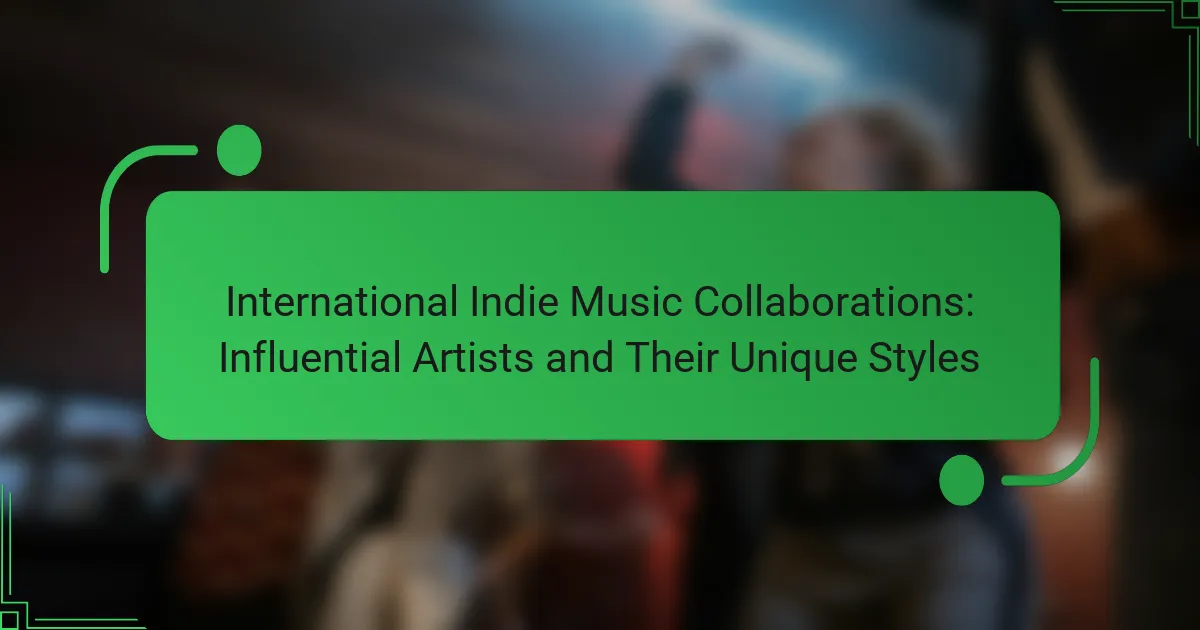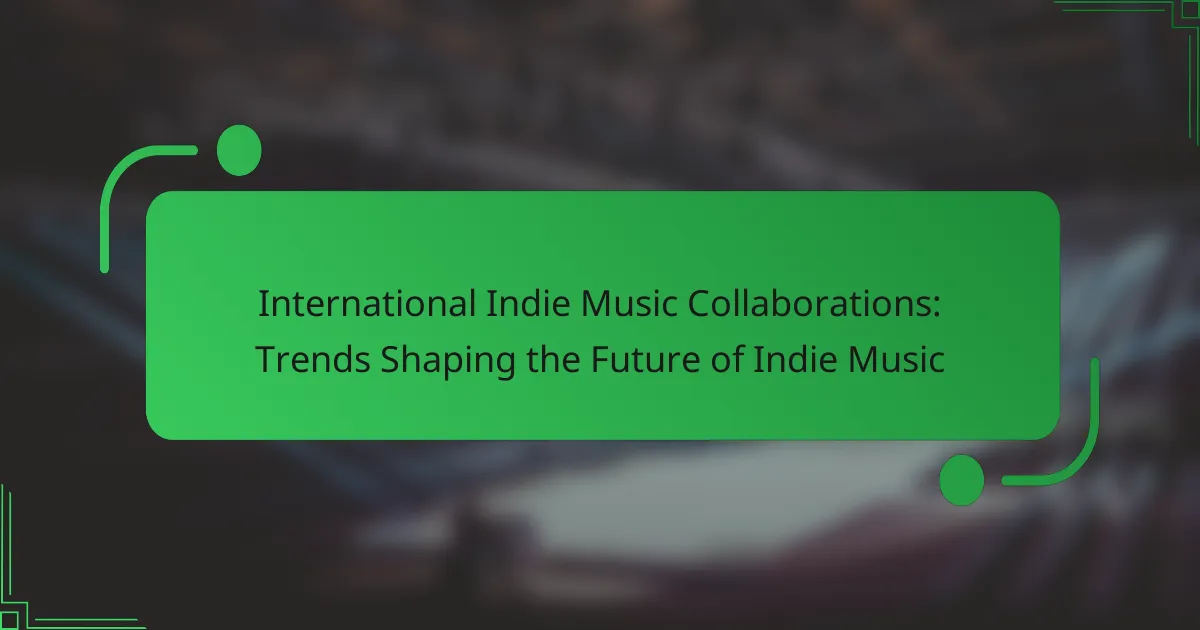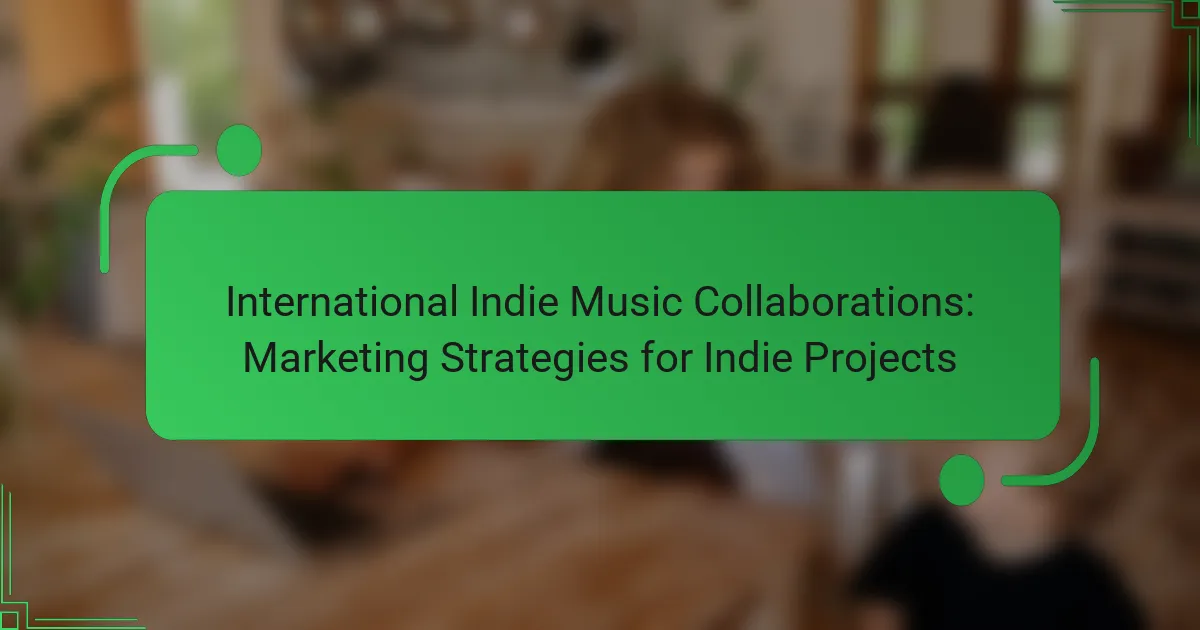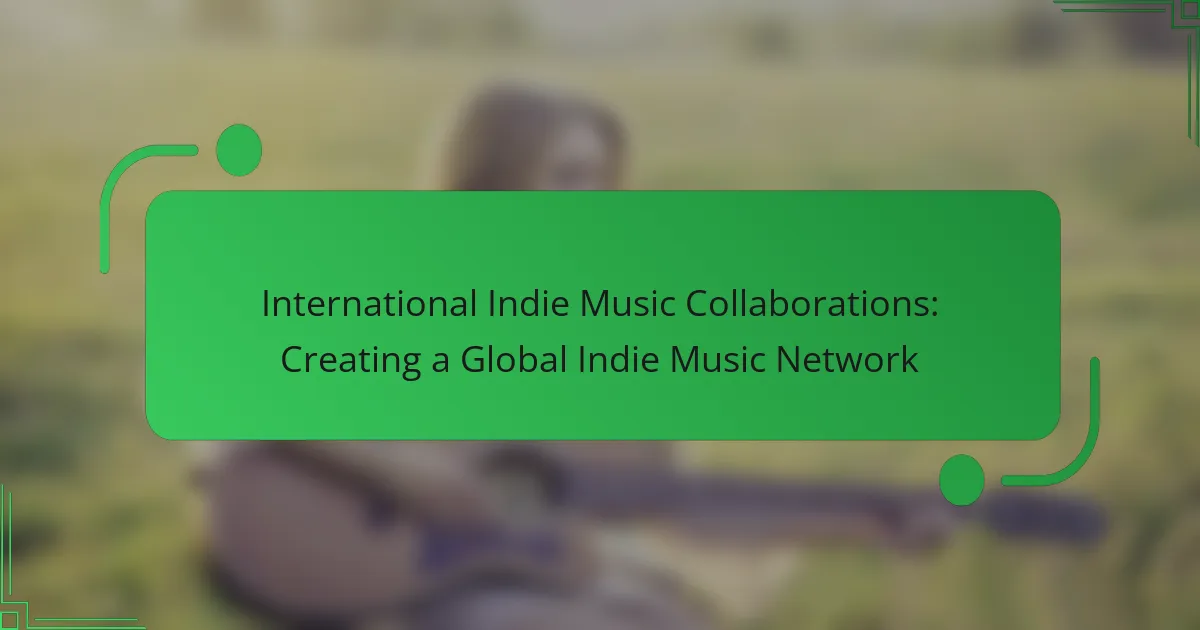International indie music collaborations enhance creativity, expand audience reach, and foster cultural exchange. This article explores the platforms facilitating these partnerships, the challenges artists face, successful case studies, and effective management strategies. Notable examples include collaborations between Bon Iver and Björk, as well as Alt-J and SOHN. Understanding these dynamics can lead to innovative soundscapes and unique artistic expressions.
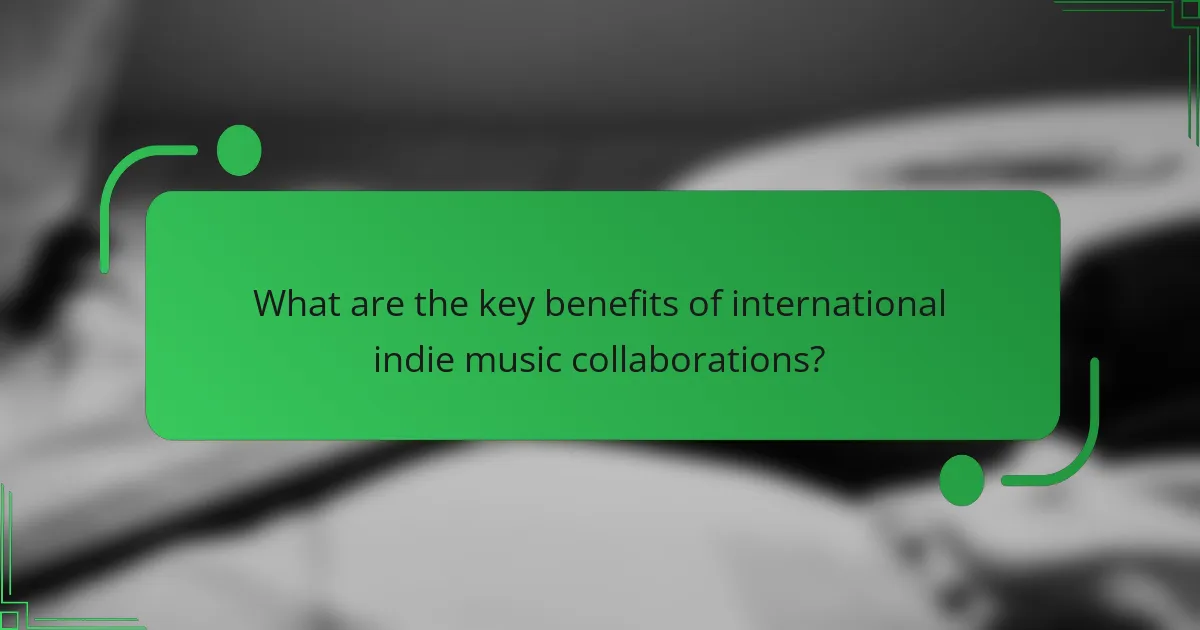
What are the key benefits of international indie music collaborations?
International indie music collaborations offer diverse benefits that enhance creativity, expand audience reach, and foster cultural exchange. These partnerships often lead to unique soundscapes that blend various musical influences. Artists gain access to new markets, increasing their visibility and fan base. Collaborations can also accelerate innovation by combining different artistic perspectives, resulting in fresh and exciting music. Additionally, such partnerships promote networking opportunities, allowing artists to connect with industry professionals globally.
How do collaborations enhance artistic creativity?
Collaborations enhance artistic creativity by merging diverse perspectives and skills. International indie music collaborations showcase how artists can innovate through shared experiences. For example, the partnership between artists from different cultural backgrounds can lead to unique soundscapes that reflect a blend of influences. These collaborations often introduce new techniques and genres, enriching the artistic process. Successful partnerships, such as those seen in global music festivals, demonstrate the power of collaboration in pushing creative boundaries and expanding audiences.
What economic advantages do artists gain from global partnerships?
Artists gain significant economic advantages from global partnerships, including expanded revenue streams and access to diverse markets. Collaborations often lead to increased visibility, allowing artists to reach international audiences. For instance, joint projects can generate higher sales through shared fan bases. Additionally, partnerships can reduce production costs, as resources and expertise are pooled. This collaborative approach fosters innovation and creativity, enhancing the overall quality of music produced. Furthermore, artists can benefit from cross-promotional opportunities, leading to increased brand partnerships and sponsorships.
How do cultural exchanges enrich the music produced?
Cultural exchanges significantly enrich music by blending diverse influences and styles. International indie music collaborations showcase how artists from different backgrounds create unique sounds. These partnerships introduce new rhythms, instruments, and lyrical themes, enhancing creativity. For example, collaborations often fuse traditional elements with contemporary genres, resulting in innovative tracks that resonate globally. This cross-cultural synergy not only broadens the audience but also fosters mutual appreciation among artists, leading to a more vibrant music landscape.
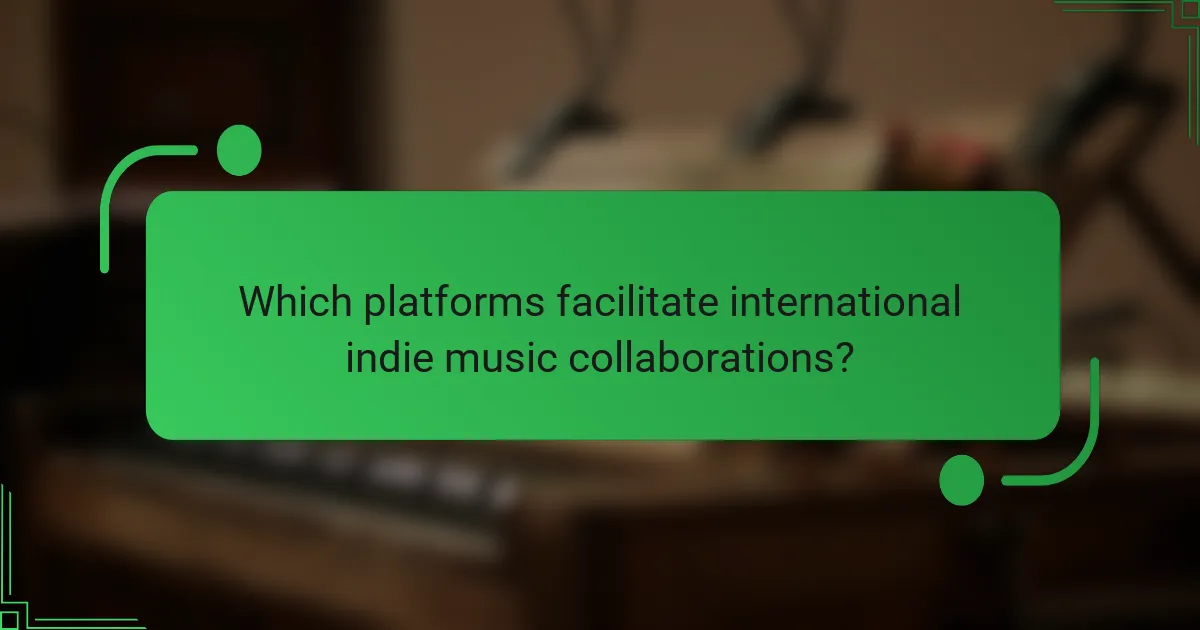
Which platforms facilitate international indie music collaborations?
Platforms that facilitate international indie music collaborations include SoundCloud, Bandcamp, and Splice. These platforms enable artists to share music, collaborate remotely, and connect with global audiences. SoundCloud allows for easy sharing and feedback, while Bandcamp provides a marketplace for indie artists. Splice offers tools for music production and collaboration, fostering creativity across borders. Each platform supports unique features that enhance international partnerships in the indie music scene.
What role do social media platforms play in connecting artists?
Social media platforms significantly enhance connections among artists by facilitating collaboration and exposure. They enable musicians to share their work, discover like-minded creatives, and engage with global audiences. For instance, platforms like Instagram and SoundCloud allow artists to showcase their music and connect with potential collaborators, leading to successful partnerships in the indie music scene. Additionally, these platforms foster communities that support and promote indie artists, further amplifying their reach and impact.
How do streaming services support cross-border collaborations?
Streaming services facilitate cross-border collaborations by providing platforms for artists to connect globally and share their work. These services enable international indie music partnerships, allowing artists to access diverse audiences and collaborate creatively. For example, platforms like Spotify and SoundCloud promote collaborative projects through curated playlists and features that highlight cross-cultural music. Additionally, streaming analytics help artists identify potential collaborators based on listener demographics, enhancing partnership opportunities. This interconnected environment fosters innovation and diversity in music, exemplifying the power of technology in bridging cultural gaps.
What are the emerging platforms for indie artists in 2025?
Emerging platforms for indie artists in 2025 include collaborative networks, decentralized music distribution services, and AI-driven promotion tools. These platforms enhance global reach and streamline partnerships.
Collaborative networks like BandLab and Splice enable real-time co-creation among artists worldwide. Decentralized music distribution services, such as Audius, allow artists to retain more revenue and control over their work. AI-driven promotion tools, like DistroKid’s HyperFollow, help artists optimize their marketing strategies effectively.
These innovations empower indie artists to forge successful international collaborations, expanding their audience and creative possibilities.
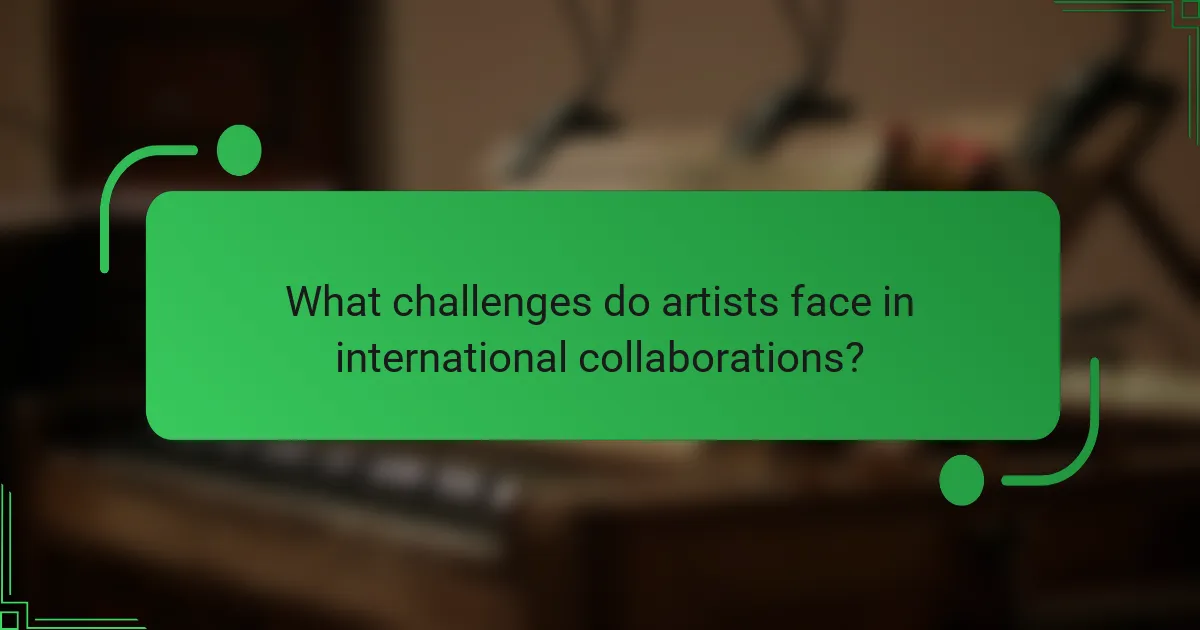
What challenges do artists face in international collaborations?
Artists face challenges in international collaborations due to cultural differences, communication barriers, and logistical issues. These factors can hinder creative synergy and project execution.
Cultural differences may lead to misunderstandings in artistic expression and collaboration dynamics. Communication barriers, including language differences, can complicate the sharing of ideas and feedback. Logistical issues, such as time zone discrepancies and varying legal frameworks, can disrupt project timelines.
Successful partnerships often navigate these challenges by establishing clear communication protocols and fostering cultural awareness. For instance, artists might engage in workshops to understand each other’s backgrounds, enhancing collaboration effectiveness.
How do language barriers impact communication?
Language barriers significantly hinder communication in international indie music collaborations. Misunderstandings can arise from linguistic differences, affecting lyrical interpretation and emotional expression. Successful partnerships often utilize translation services or bilingual members to bridge gaps, enhancing creative synergy. Collaborative tools and platforms that support multiple languages also play a crucial role in facilitating effective communication among diverse artists.
What legal considerations must artists navigate?
Artists must navigate various legal considerations, including copyright, contract negotiations, and international laws. Copyright protects original works, ensuring artists retain rights to their music. Contract negotiations are crucial for defining roles, revenue sharing, and distribution rights among collaborators. Understanding international laws is essential, as they vary by country and can impact the enforcement of agreements. Additionally, artists should consider licensing requirements for music usage in different jurisdictions to avoid legal disputes.
How do cultural differences affect collaboration dynamics?
Cultural differences significantly influence collaboration dynamics in international indie music partnerships. Diverse backgrounds shape communication styles, creative processes, and decision-making approaches.
For instance, artists from collectivist cultures may prioritize group consensus, while those from individualistic societies might focus on personal expression. These contrasting values can lead to misunderstandings or conflicts, impacting project outcomes.
Successful collaborations often involve awareness of these cultural nuances. Establishing clear communication channels and mutual respect fosters a positive environment. A case study of a successful partnership highlights how blending distinct musical styles can create innovative sounds, demonstrating the potential of cultural diversity in music.
Ultimately, embracing cultural differences enhances creativity and collaboration, leading to richer artistic expressions and broader audience appeal.
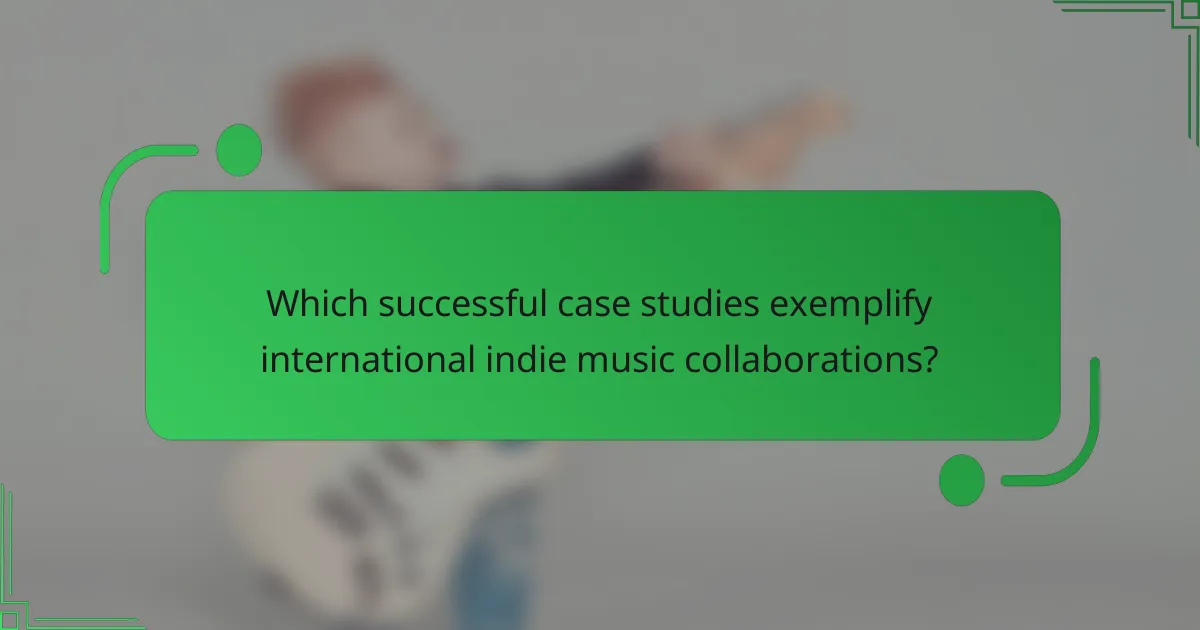
Which successful case studies exemplify international indie music collaborations?
International indie music collaborations have led to notable success stories. One prominent example is the partnership between the American band Bon Iver and the Swedish artist Björk, which resulted in innovative cross-genre music that captivated audiences worldwide. Another case is the collaboration between the British band Alt-J and the German electronic musician SOHN, blending their distinct styles to create critically acclaimed tracks. Additionally, the project “The 1975” featuring various international artists showcases the potential of global collaborations in reaching diverse fan bases. These examples highlight the creative synergy that can emerge from international indie music partnerships.
What can be learned from the collaboration between artists from different continents?
International indie music collaborations reveal diverse cultural influences, broadening artistic expression. By working together, artists combine unique styles, leading to innovative sounds. These partnerships foster global connections that enrich the music landscape. Successful examples include collaborations between artists from Africa and Europe, showcasing how different backgrounds enhance creativity and audience reach.
How did a unique partnership lead to a viral hit in 2025?
A unique partnership between diverse indie artists created a viral hit in 2025 by blending distinct musical styles. This collaboration leveraged the artists’ individual followings, amplifying their reach. The fusion of genres attracted a wider audience, showcasing the power of cross-cultural creativity. Additionally, strategic social media campaigns further propelled the song’s popularity, demonstrating that innovative partnerships can redefine success in the music industry.
What innovative projects showcase the power of cross-cultural music?
International indie music collaborations demonstrate the power of cross-cultural music through diverse partnerships. Notable examples include the collaboration between the British band The xx and the Mexican artist Natalia Lafourcade, blending indie pop with traditional Latin sounds. Another successful partnership is between the American group Bon Iver and the Japanese artist Saito, merging folk elements with Japanese instrumentation. These projects highlight how artists from different backgrounds create unique musical experiences and foster cultural exchange. Additionally, the collaboration between the French musician Woodkid and the South African ensemble creates a rich tapestry of sound that resonates globally. Such partnerships not only enhance artistic expression but also promote understanding across cultures.
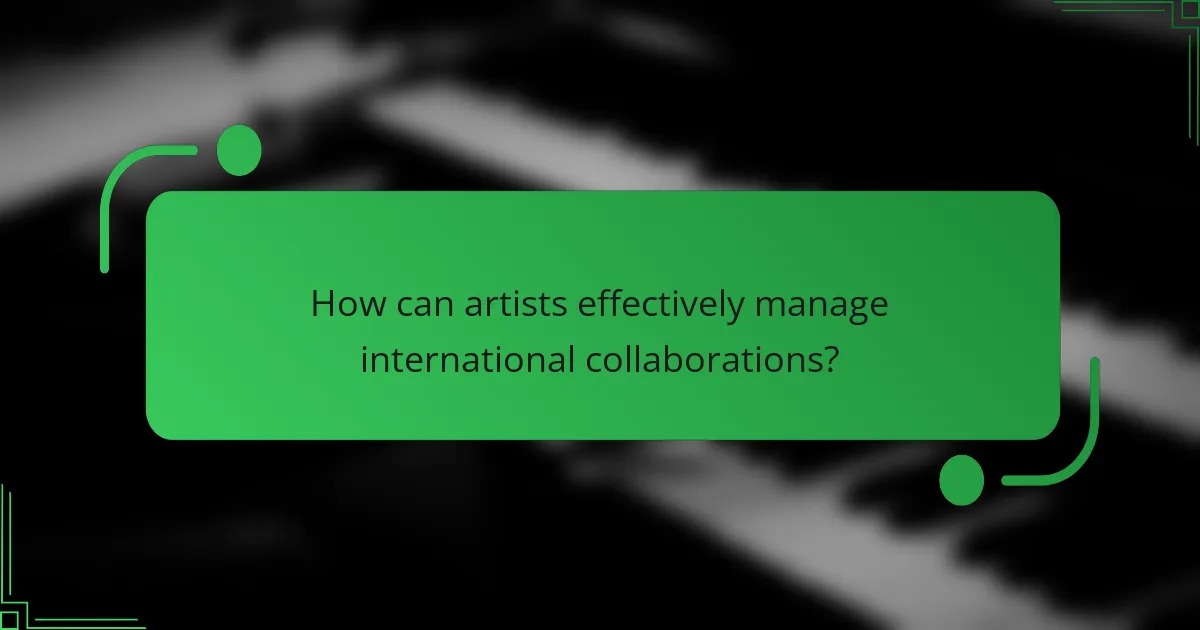
How can artists effectively manage international collaborations?
Artists can effectively manage international collaborations by establishing clear communication, setting mutual goals, and respecting cultural differences. Successful partnerships often rely on defined roles and responsibilities, ensuring each participant contributes their strengths.
For instance, artists can utilize digital platforms for real-time collaboration, allowing for seamless sharing of ideas and feedback. Regular check-ins help maintain alignment and foster trust among collaborators.
Additionally, understanding the legal and financial aspects of international agreements is crucial. Artists should seek advice on contracts, copyright laws, and revenue sharing to avoid potential conflicts.
Lastly, embracing diverse influences can enhance creativity. Collaborating with artists from different backgrounds often leads to innovative soundscapes and unique artistic expressions.
What strategies ensure clear communication among collaborators?
Clear communication among collaborators in international indie music projects relies on several strategies. Establishing a shared vision ensures all parties align on goals. Regular check-ins foster transparency, allowing for real-time feedback. Utilizing collaborative tools enhances coordination, streamlining project management. Defining roles and responsibilities clarifies expectations, reducing misunderstandings. Lastly, cultural sensitivity promotes respect and understanding, creating a positive collaborative environment.
How do artists maintain creative control in joint projects?
Artists maintain creative control in joint projects through clear communication, defined roles, and mutual respect. Successful collaborations often involve establishing boundaries that protect individual artistic visions. For example, artists may negotiate specific contributions or set guidelines for decision-making processes. This clarity helps prevent conflicts and fosters a collaborative environment. Additionally, frequent check-ins and feedback loops ensure all parties remain aligned with the project’s goals.
What are best practices for promoting collaborative music?
To promote collaborative music effectively, focus on building strong relationships and leveraging diverse platforms. Successful partnerships often involve clear communication, shared goals, and mutual respect. Engaging with international indie artists can enhance creativity and broaden reach. Case studies show that collaborative projects benefit from strategic marketing and audience engagement. Utilizing social media, live performances, and joint releases can amplify visibility and foster community support.
What common mistakes should artists avoid in international partnerships?
Artists should avoid lack of communication, unclear expectations, and cultural misunderstandings in international partnerships. These mistakes can hinder collaboration and lead to project failures. Effective communication is essential for aligning goals and ensuring all parties understand their roles. Establishing clear expectations prevents disputes and fosters a productive working environment. Cultural awareness enhances mutual respect and can inspire creativity in the collaboration.
